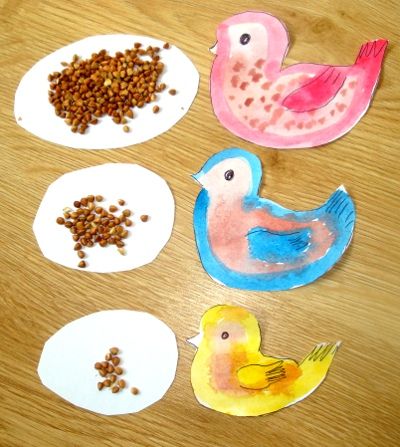Hand feeding baby hamsters
How To Properly Care For Baby Hamsters
Expecting, are we? It can be unexpected but not surprising.
Hamsters sexually mature quickly. They can reproduce as early as 4 weeks of age. If you bought them at a pet store recently or already have them as pets, it could be that the female hamsters were sharing a cage with the male ones.
How To Tell if Your Hamster is Pregnant?You can tell that a hamster is pregnant if she appears to have gain weight. A noticeable bulge in her abdomen just over her hips can be seen days before the delivery.
She acts restless and agitated. She hoards more food than usual and begins to add more bedding materials to the nest.
It can be a bit tricky not knowing when the mating took place. Before you know it, the pups are on their way and you are totally unprepared.
When Will the Pups Come Out?The gestation period (from the moment of conception until the babies are born) varies from one breed to another.
Syrian hamsters, for example, will remain pregnant for about 16 days. The pregnancy for both the Chinese and Russian Dwarf hamsters lasts about 18-21 days. A Roborovski hamster would take about 30 days.
Before the Pups ArrivalCaring for a baby hamster should start from caring for the mother during pregnancy. A pregnant hamster needs plenty of clean water and a good quality diet throughout the pregnancy until the babies are weaned.
Critter Chaws suggests increasing its protein and fat intake by serving hard-boiled eggs, boiled chicken, cereals, among others.
Make sure that their home is clean and ready. If you think you can go near the cage before you expect the pups to be born, do so.
- Clean the cage and provide lots of fresh nesting material like strips of toilet paper or facial tissues.
- Take out the wheel and other toys from the cage to prevent injury to pups
- Keep the temperature constant at around 18-24 degrees Celsius
Now sit back and don’t disturb the cage or handle the mother unnecessarily.
It is critical that you don’t handle the cage, the mother, and the babies at this point and for the next two weeks. When the mother smells your scent in the cage and on the babies, she will feel threatened and eat her pups. This is her way of coping with an intruder.
The pups are born blind, deaf, hairless, and pink! They are so delicate that they can easily lose a limb.
They are born singly and covered with a caul; a skin-like membrane. The caul is packed with nutrients and eaten by the mother as a way to recharge after the birthing process.
Litter sizes can vary from one to as much as twenty and they will normally be scattered around the cage. When the mother had time to rest, she will gather them all up, bring them to the nest, and begin nursing.
By day 4, a dark covering of fur will become visible and their ear canals start to open. Day 5 signals the time their markings will show. They will begin to crawl around the cage.
Again, resist the urge to pick them up. The mother will retrieve them or the pups themselves will crawl back into the nest. This is a good time to lower the water level so it is accessible.
Day 10 marks the start of them snacking on solid foods. You can put bits of cooked or grated vegetables.
By the second week, their eyes will start to open. You can now clean the cage by this time and put fresh toilet paper as bedding.
When the pups reach 21-28 days old, they are ready to leave their mother. The sexes should be separated and placed in different cages to avoid fighting and breeding.
Be gentle when handling baby hamsters; they can move quickly so be careful.
Caring for a Baby Hamster Without a MotherHere are things to note if you find yourself in a situation where the mother is unable to care for her babies:
Food and Feeding Method- Feed them with Lactol; a milk formula as a replacement for mother’s milk.

- Milk is to be given every hour until they are 7-10 days old using an eyedropper.
- Do not squirt the milk but instead, let a drop of milk hover on the dropper and let the pup suck or lick it.
- Two drops of milk are enough for one feeding
Hamster care can be a daunting task but if you care and follow the necessary steps, then there’s nothing to keep you away from raising healthy and happy hamsters.
Related articles:
- 7 Reasons NOT to Give a Bunny as an Easter Present
- There’s an App for That!
- Benefits of Hiring a Professional Pet Care and Pet Sitting Service Provider
How To Hand-Rear Baby Hamsters
Hand-rearing baby hamsters is an exhausting task. There are only two reasons for deciding that hand-rearing is the way to go.
- If the mother has abandoned her nest and doesn’t feed/keep warm/defend the babies herself.
- If the mother has died before the litter are 14 days old
Under no other circumstances should hand-rearing be the first option unless advised so by a vet (in very rare cases).
In this article I will show you how to set up a suitable cage, how to keep the nest warm, how to hold and feed a baby hamster and how to encourage peeing and pooping.
All this information is from personal experience and through extensive research on Google.
I recommend all this information for pups upward of 7 days old.
What you need:
A basic cage (preferably one without fancy tubes and tunnels)
Kitchen roll
Pet-safe bedding
Hamster muesli
Fresh vegetables (carrot or cucumber being better choices for babies)
A water bottle
NOTE: Do not use sawdust in a babies cage as it can be dangerous for tiny inexperienced mouths!
As you can see from the picture (right) the cage I am using doesn’t even require a lid as such yet. The babies are at such a stage that climbing out is unachievable and as the feeds are regular, its a pain to have to take a lid on and off constantly.
The base is also compromised of 4 sheets of large kitchen roll.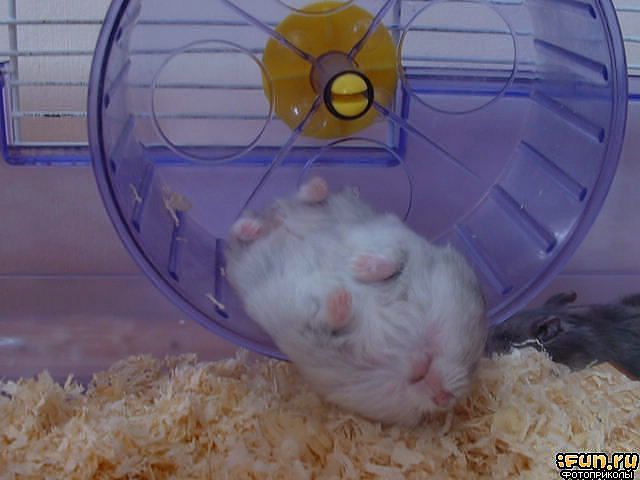 It covers the bare plastic, provides vital heat insulation and is much safer than sawdust at this stage in the pups lives.
It covers the bare plastic, provides vital heat insulation and is much safer than sawdust at this stage in the pups lives.
Everything is very much open which is important for keeping an eye on wandering babies. As they are still blind having places to hide is a risky move on the owners part so keeping things as simple and open is important.
I have also attached the water bottle onto the inside as low as possible to the ground so that when they are exploring if they want a little drink, they can. As of yet, they havent touched the water bottle. I think 14-21 days is the general time region to expect self-drinking babies, if not longer.
The nest in which you are raising these babies in is hugely important. Its where the majority of the pups time will be spent whilst growing up.
As you are rearing these babies without a mother, the necessities wont be provided naturally to the babies. For example, the heat of a mothers belly will no longer be there to maintain a healthy body temperature for the pups.
This is crucial!!
Babies will lose their body temperatures very quickly when alone and without a mothers tum to nestle into, this is literally a matter of life and death for young pups.
To compensate for a mothers tum, there are two things to do to keep your hamster babies toasty.
Firstly, an almost boiling-hot water bottle. Its incredibly difficult to maintain an even temperature but throughout the night you cant cradle the bubs against your own body for warmth! So its the easiest way to heat the nest.
This is where the layers of kitchen roll and a hot water bottle cover come in handy dispersing heat and also makes sure that the cage doesn’t overheat.
If it is too hot, the babies may squeak a little (they are letting you know its uncomfy – simply place a towel or blanket inbetween the base and bottle to take away some heat) or they will just move out of the heated section of nest. They aren’t stupid and they will decide where they want to sleep in the nest.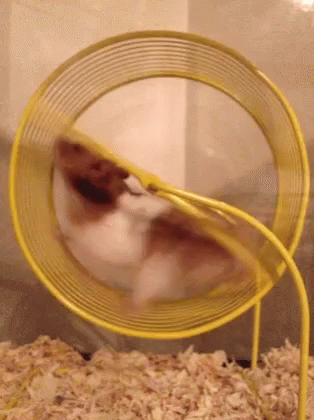
This will require changes every 3 or 4 hours to maintain a decent temperature (even throughout the night) so pay attention and regular checks are a MUST!
In contrast, heat pads are available which can maintain even temperatures across a layer which can be placed in a cage however they can be costly (especially when you’ll only really need them for 2 or 3 weeks) and I was recommended by a worker at Pets at Home that heat-pads are more commonly used for reptiles and regularly-changed hot water bottles are equally as good for this situation.
The second way to keep the bubs warm?
Hold them in your hands of course! Plenty of handling can be helpful as it keeps them at body temperature which is the end game really. Like I said earlier, this isnt possible 24 hours a day but any chances you get – it can be super efficient!
Hand feeding a baby hamster is a challenging operation. It requires effort, patience and a very gentle touch.
What you need:
Cat/Kitten milk
(“there is no difference” said the vet)
A pipette
(I got mine from Boots Pharmacy for 99p)
Fresh vegetables/fruit
(carrot, apple and cucumber again are best)
How often?
From 1-14 days old hourly feeds are required. Yes, every hour! I never said it was easy people! Pups get dehydrated in a matter of hours so slacking on this front could kill them.
When the pups are eating soft/solid foods (approximately between 10-16 days) the milk weaning can begin reducing feeds to every 3 hours.
When the pups are comfortably feeding themselves, milk feeds can be stopped altogether.
Is cow’s milk okay?
No.
Babies need nutrients from milk to help them develop and grow properly. Milk low/without lactose is important as it is as close to the mothers milk as you can commercially get.Cat or puppy milk was recommended by the vet I visited, and she also stated that there was not much difference between cat and kitten milk so either is perfect for feeding baby hamsters.
How to hand feed milk
It is a very time-consuming task hand feeding pups.
You have to take it sloooooow. Any hurry or forceful feeding can lead to milk being inhaled into the lungs and causing death within the minute. This is serious stuff!
- Gently hold the pup in your hand being careful not to squeeze them tightly.
- Take a pipette full of milk and place it near the pups mouth. Remember they are not used to being fed this way so resistance is natural.
- Try not to squeeze vast quantities into their mouth, they’ll choke! Little and often is the way to go.
- Allow the pup to lick/bite the end of the pipette on their own to take in milk.
- If they dont show an interest, a small drop of milk on the bottom lip can be licked up and enjoyed all the same.
- Wait for the pup to stop ‘chewing’ the milk (its how they swallow and is normal) then repeat
About 2 or 3 drops in one sitting is plenty for a little hammy.
Anymore and you may be doing more harm than good.
If milk covers the nostrils, be quick to wipe it off as this can be inhaled and will kill your pup.
I find hand-feeding 2 pups takes between 10-15 minutes. There is no point in rushing the feeds as, like I mentioned earlier, they are still babies and can inhale just as easily as swallow which will kill them!
How to introduce solid foods
There is no use leaving a bowl full of muesli out for your babies to munch on. Their teeth are still developing and will have nowhere near enough power in their jaws to break down the solid nib-lets you get in muesli.
This is where fresh veg come into play.
Dice your chosen veg into teeny-tiny chunks – no bigger than the pups ear-size.
Place the chunk in your hand in front of them and wait for them to hoover it up.
They very well may take a good 20 minutes chewing a chunk – its new to them! Just be patient and wait for them to 100% finish the chunk before feeding a drop of milk or just retuning them to the nest.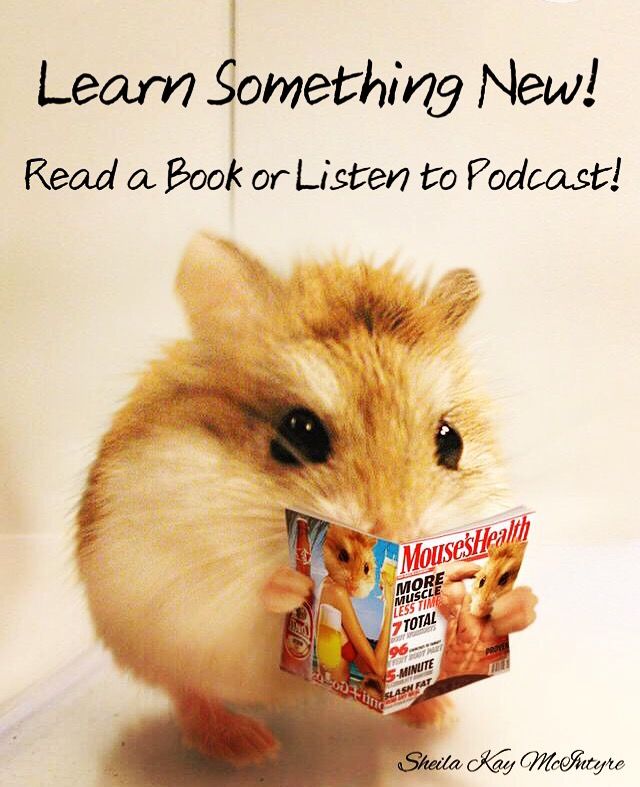 You don’t want to over-do it.
You don’t want to over-do it.
Placing these finely chopped veg into the cage near the nest encourages the pups to explore and scavenge for their food.
Finely chopped apple is also a winning food as its hydrating as well as nutritious.
You may very well giggle at this but until about 12-15 days of age they wont be able to pee or poop on their own. Their mother would have to lick their bottoms to encourage them to relieve themselves which is where you have to step in and play surrogate.
If you don’t do this, it can lead to “backing-up”. Can you imagine how uncomfortable that would be for a bub?! Its also a cause of death for infant rodents, so dont slack about at this stage!
What you need:
Lukewarm clean water
Cotton bud
A tissue
Basically heat the water to about body temperature (you are mimic-ing a mothers lick here).
Dip the cotton bud into the water, drain any excess water off.
Hold the baby so their bottoms are hanging free from your grip.
Gently rub the damp end on the babies bottom area. A regular up-and-down motion for no more than 10 seconds will encourage the babies to relax enough to pee. They even tend to hold still at this stage so you know they’re concentrating!
Having placed the tissue underneath the pup, it should catch any drips from their little wee! Any poop may need a bit of extra rubbing with a cotton bud. Stubborn things!
How often should you do this?
Really as often as you can manage!
I do my two every 2 hours or so however at 10 days old they have started peeing and pooping without encouragement – phew! I only discovered this however when they were causally exploring my bed and both managed to pee in unison.
————–
As I said at the start, the whole process is not for the faint-hearted. Its all very well thinking its best for your pups to be hand-raised by yourself but are you prepared to sacrifice everything that comes with it? (Sleep being a biggie! I haven’t slept for more than 2 hours at any stage since Friday)
Taking the babies away from the mother may be the only option but it needs to be considered in respect to everything else – do you have the time to hand-raise a litter?
Tomorrow I shall post a 24 hour ‘diary’ of my day caring for the pups, just to give you an idea of how much my life currently revolves around these tiny rodents!
Hope this information is helpful to someone out there!
If you have further questions/worries you can contact me for free of course.
Like this:
Like Loading...
Categories: animals, Care, FAQs, Hamsters, Health, Pets | Tags: abandoned nest, animals, baby animals, baby hamsters, baby-safe cage, care, care for runts, facts, feeding, hamsters, hand feeding, hand feeding hamsters, hand rearing, hand-raise, handrearing, how, how to care for a baby hamster, how to care for baby hamsters, how to feed a baby hamster, how to keep a baby hamsters nest warm, how to set up a hamster baby cage, information, love, motherhood, nesting, parenthood, pets, rodents, runt care, what to do | 20 Comments
Care and maintenance of a hamster at home, food, arrangement
Hamsters are charming animals. They make excellent family pets for both older children and adults, provided they are taught how to perform feeding and grooming duties.
We have prepared for you a handy hamster care guide, in which we tell you the most important things about keeping a hamster at home.
When you bring home your new friend, there will be unusual conditions around him. Give your hamster space to get to know his new environment for a few days - cover the cage or aquarium with a light cloth. Take off the cover at night.
Hamsters love to chew and nibble. Choose a hard-bottomed cage or a glass aquarium with a well-ventilated wire mesh lid. At the bottom, pour about 3 cm of sawdust or paper filler. Add some shavings from your old hamster habitat and your new friend will immediately feel right at home. Make sure that your pet's food is not in the same place where the animal sleeps.
Your little hamster needs a safe home where they can move freely and feel comfortable. Place tunnels, labyrinths, a wheel in the cage to make the habitat unique and interesting.
The house needs to be kept clean and comfortable, but you need to know the measure, do not create unnecessary stressful moments due to too frequent cleaning. Golden mean:
● Clean the toilet area daily;
● Replace the entire bedding if necessary (dirty/wet) or once a week;
● Wash the bowl of dry food weekly and every other day from succulent food;
● Clean the drinker weekly;
● Wipe the cage or aquarium with soap and water every week or every two weeks to keep it clean and remove bad odors.
What do hamsters eat?
Pellets are pellet food, a good choice for feeding your hamster. Food in the form of pellets prevents animals from choosing the most delicious ingredients and provides your pet with a balance of nutrients. Feed your hamster once a day, the bowl should be about three-quarters full. The diet may also include vegetables that can be given every other day. The menu is allowed to include: pumpkin, greens, zucchini, grated carrots, broccoli, cucumbers, apples, pears and berries. Give your hamsters as many fruits and vegetables as they can eat in about 4 hours. Do not overfeed the animals - they love to save! As for water, offer it constantly, it is better to install a special drinker with a glass spout.
How much should a hamster eat?
● Granular products: renew daily 75%
● Vegetables: dark leafy greens, pumpkin, zucchini, broccoli every other day or 15%
● Fruits: apples, bananas, melons once a week or 5%
● Treats: raisins and alfalfa hay 2 times a week or 5%
● Water: Give clean water daily!
● Twigs for grinding teeth
Hamster Care
Your hamster will have grooming needs as well. These include:
These include:
● Brushing: Long-haired Syrian hamsters, often referred to as teddy bear hamsters, should be brushed weekly to remove chips, food, and dirt that may be stuck in their coat. Use a small animal comb or a soft, thin toothbrush.
● Feet: Most hamsters don't really need to trim their nails, but if you notice that your pet is itching during grooming, or if their claws have started to curl, check with your veterinarian about what to do.
● Mouth Check: The health of your hamster's teeth is very important as they never stop growing. Provide your pet with enough chew sticks and toys to wear down their ever-growing teeth, and if a tooth ever grows back too much, becomes broken or chipped, be sure to visit the veterinarian.
● Skin Care: Wool helps retain natural oils in the skin, so hairless pets often need to rub a very small amount of unscented coconut or baby oil into their skin to prevent dryness and keep the skin healthy. Such care is necessary for hairless Syrian hamsters.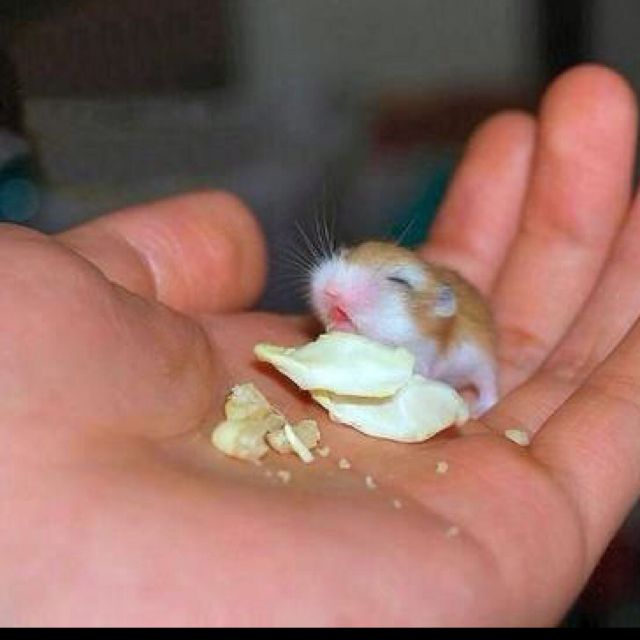
● A great way to give your pet some exercise and socializing is to play outside the cage every week. We suggest setting up a small fenced area with lots of toys and treats for your hamster to explore the play area, develop and socialize with his human family! Remember to always supervise your pet when he or she is out of the cage. You can also use a special plastic ball for walking.
● Handle your pet with care. Unlike other small animals, hamsters need to be picked up with both hands and held in cupped palms. It's the same with lowering them, but be especially careful that the pet does not accidentally slip out of your hands. Because hamsters are nocturnal, be mindful of the time of day you try to interact with them.
How to keep a hamster healthy?
Take your hamster to a veterinarian experienced with small pets a few days after you bring the hamster home and then annually.
If your rodent is showing any of these symptoms, see a ratologist for a checkup:
- Wheezing
- Runny nose
- Irregular eating or drinking
- Anterior teeth too long
- Bald patches
- Ulcers on paws
- Loose stool
- Blood in urine
- Itching
At Dobrye Ruki Veterinary Clinic, we understand that you may have some questions, especially if you have a hamster for the first time, contact our ratologist, we will be happy to help. To get an appointment, just call.
To get an appointment, just call.
How to tame a hamster? | Tail News
Rodent Care
September 11, 2017
65587
Hamsters are incredibly cute and cute rodents that you just want to stroke and hold in your hands. But in practice, this idea can turn into a bite! Hamsters require special handling and must be tamed before they can truly befriend them. How to do it?
Many novice owners are perplexed: why does a hamster bite? Indeed, you don’t expect such behavior from a cute baby, but if you learn more about the animals, everything becomes clear.
In the wild, hamsters fight for their lives every day, hiding from predators. What do you think, what associations does a rodent have with a hand suddenly appearing in a cage and trying to grab it? Of course, his instinct speaks of danger, and the animal defends itself as best it can, using its teeth. Believe me, he does not want to offend you: he is simply afraid.
How to tame a hamster in this case? - Very simple. But the main rule: no rush. It will take a few days for the animal to move away from the stress of moving, get used to the new environment and fully adapt. Some pets even refuse food for some time after the move - their stress is so strong. And after the hamster gets used to the new home and feels confident, you can start taming it. Here are some helpful tips on how to do this:
1. If possible, get a hamster under the age of 2 months. Babies are easier to tame, while an untamed adult hamster will show enviable stubbornness.
2. Spend more time around your hamster. While in the room, talk to him often so that he gets used to your voice. Approach the cage, but do not try to pick up the hamster. First, he must get used to you from a distance. Try not to make noise so as not to frighten the animal, i.e. do not evoke in him associations with danger.
3. Gradually start offering treats to your hamster from your hand.










